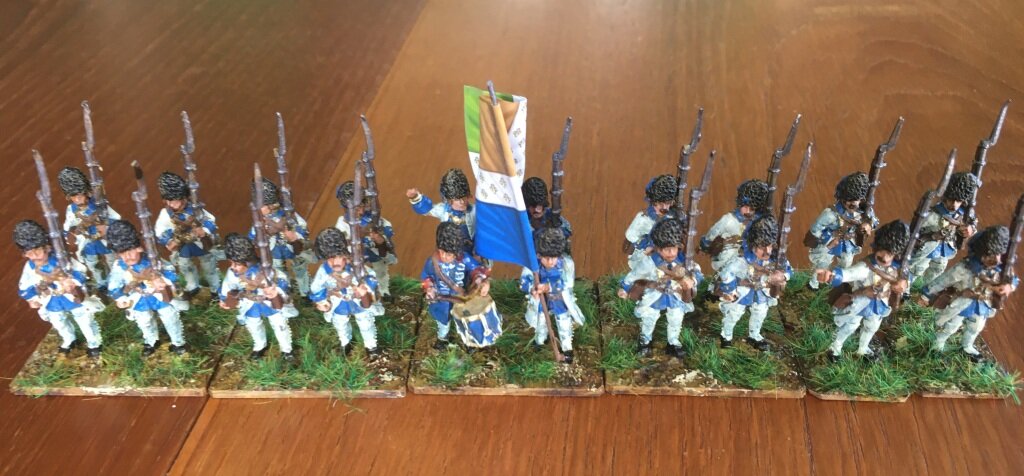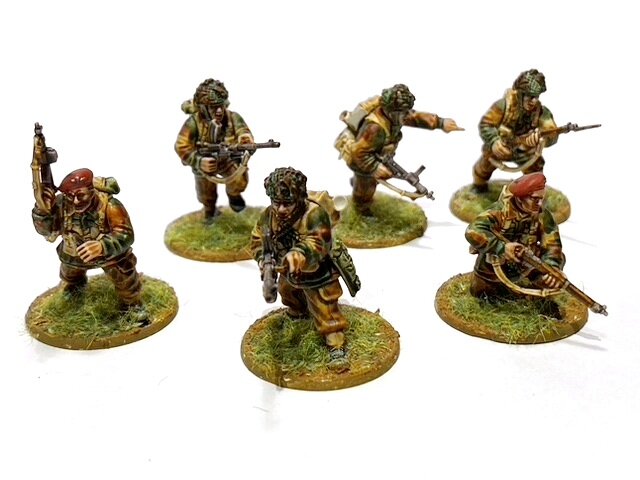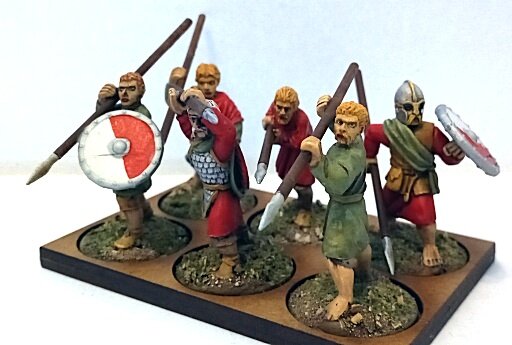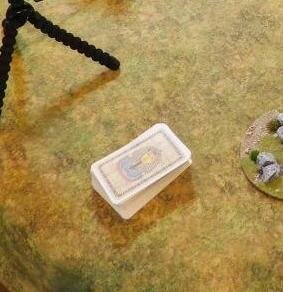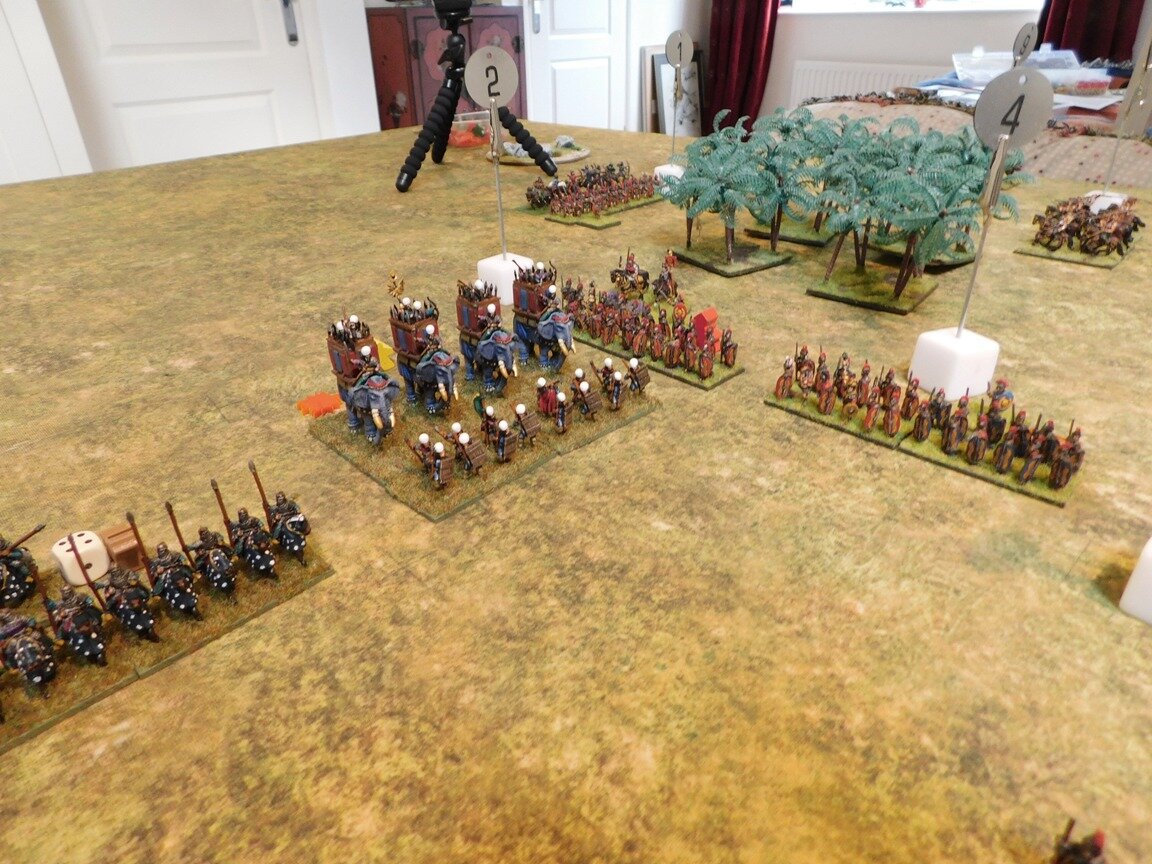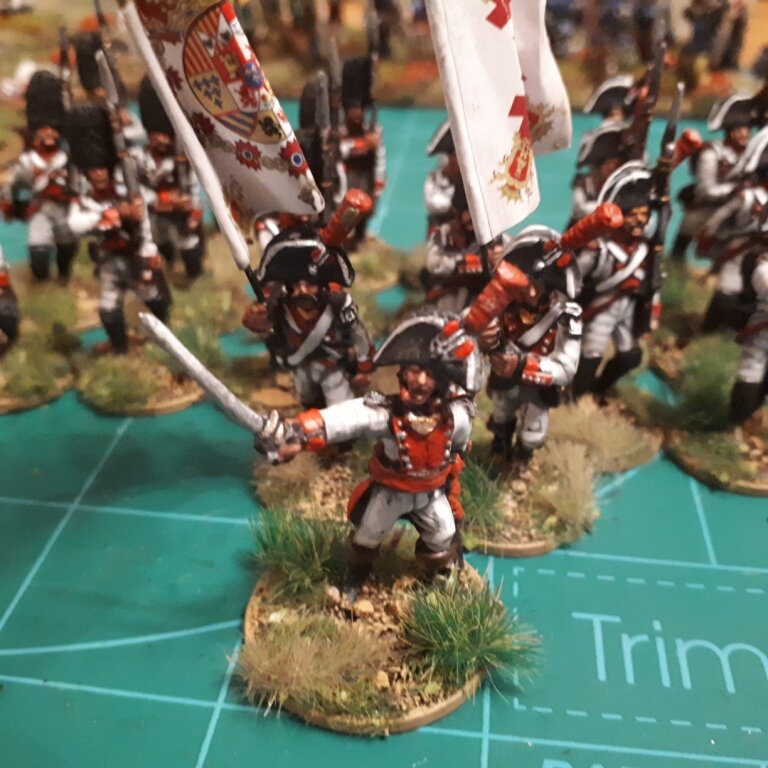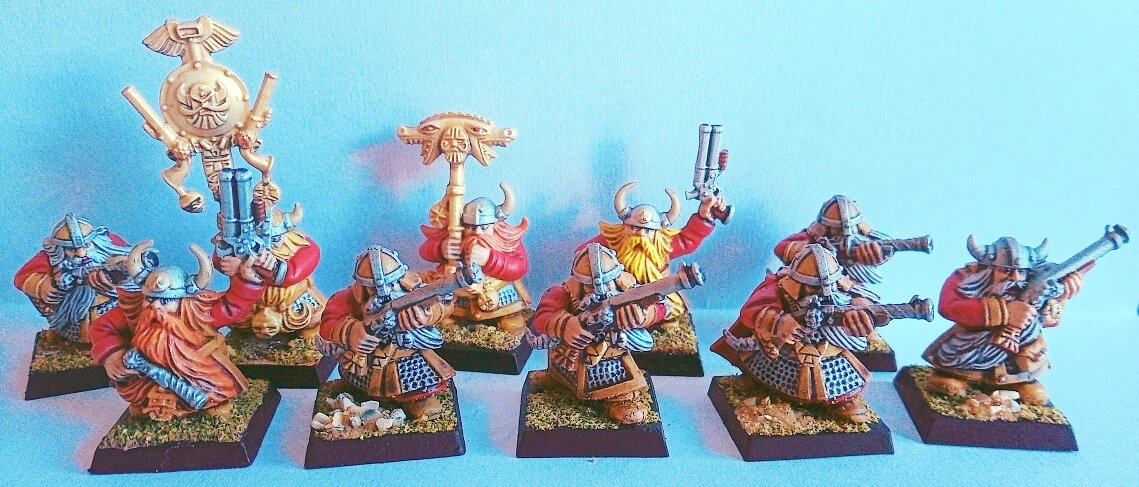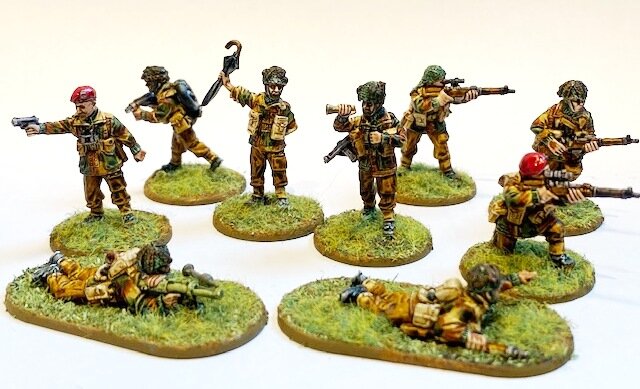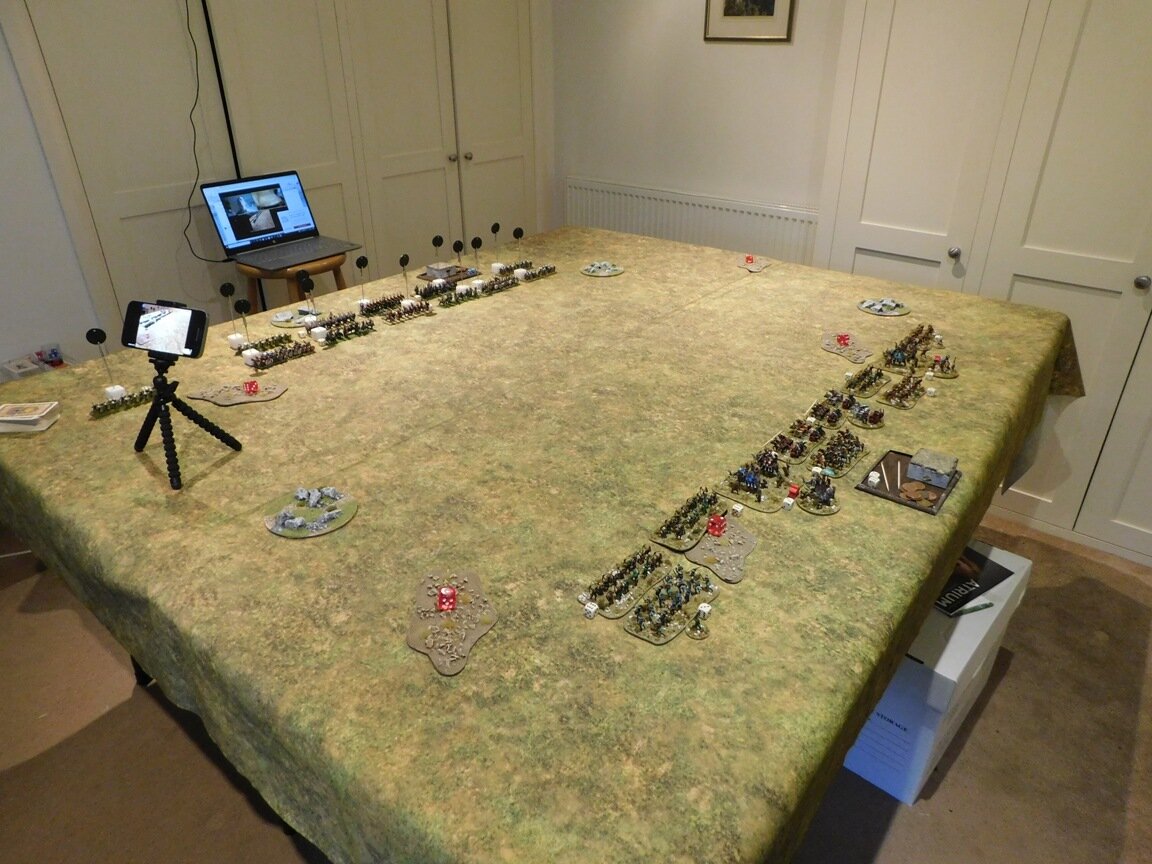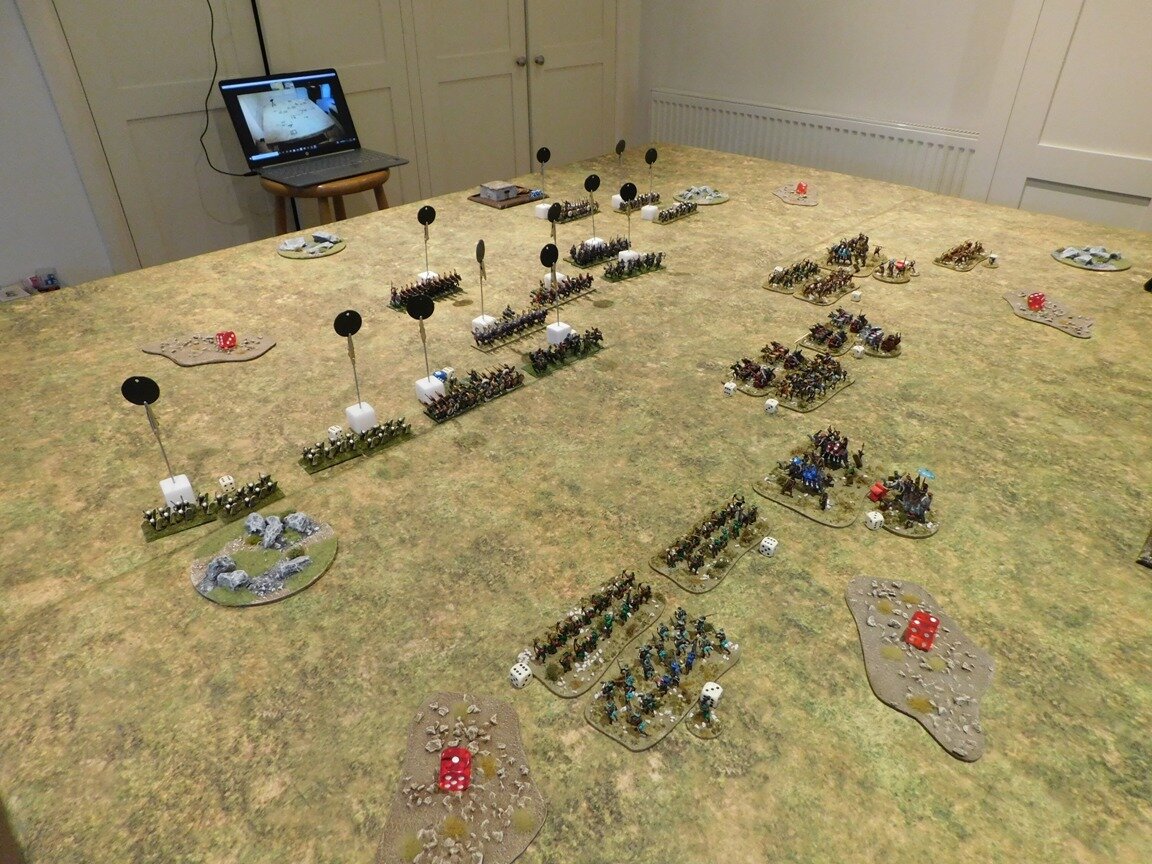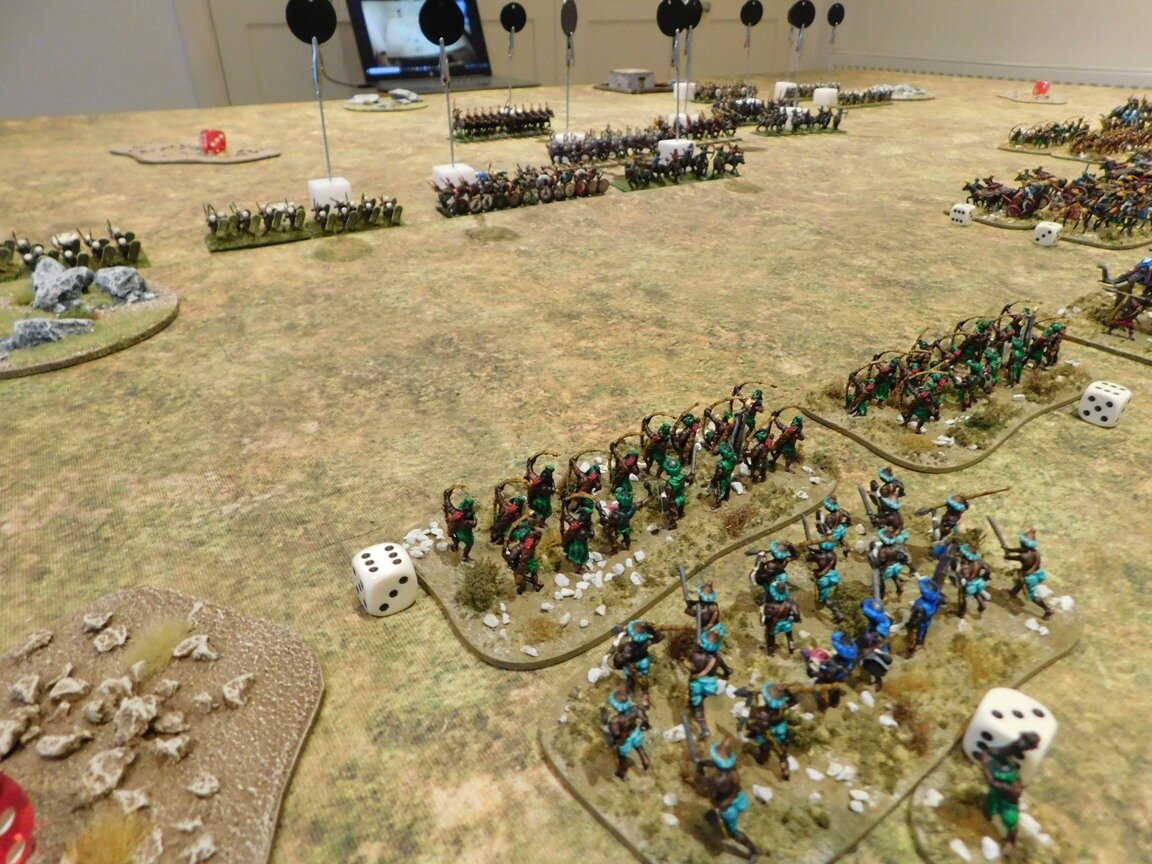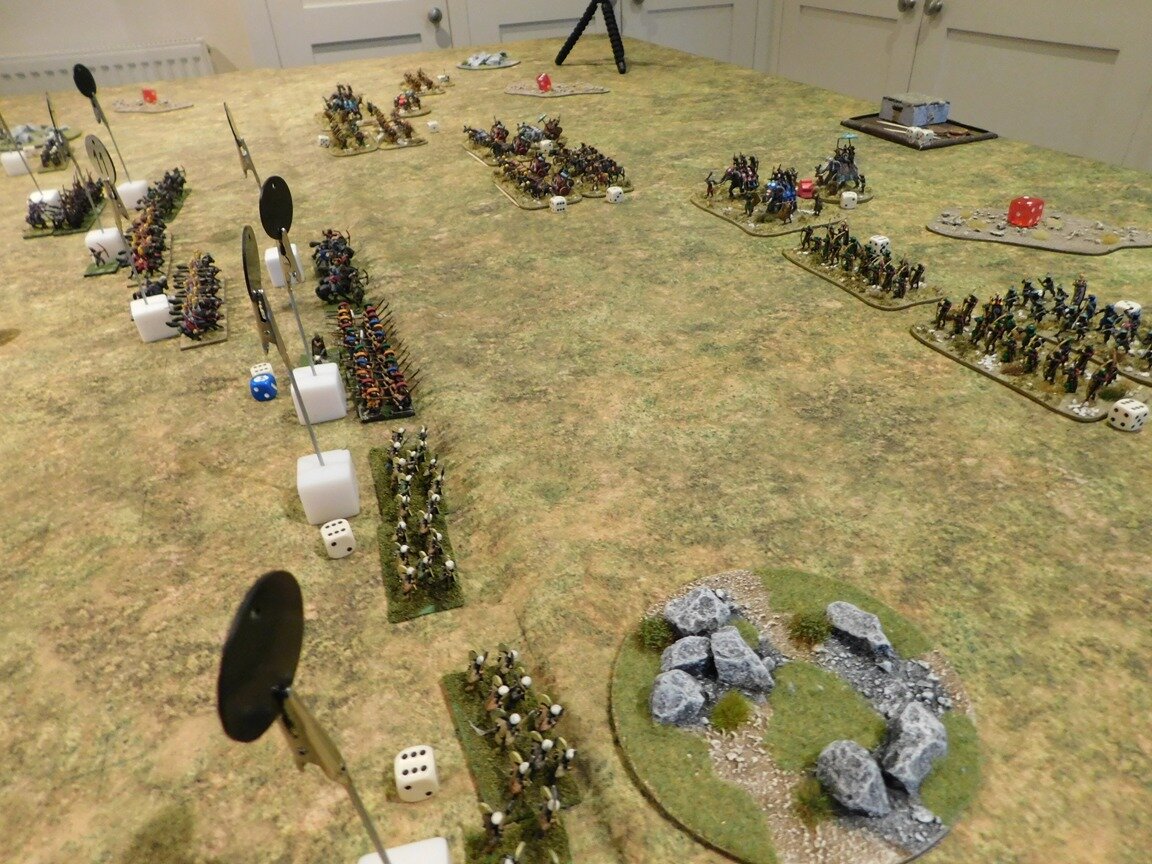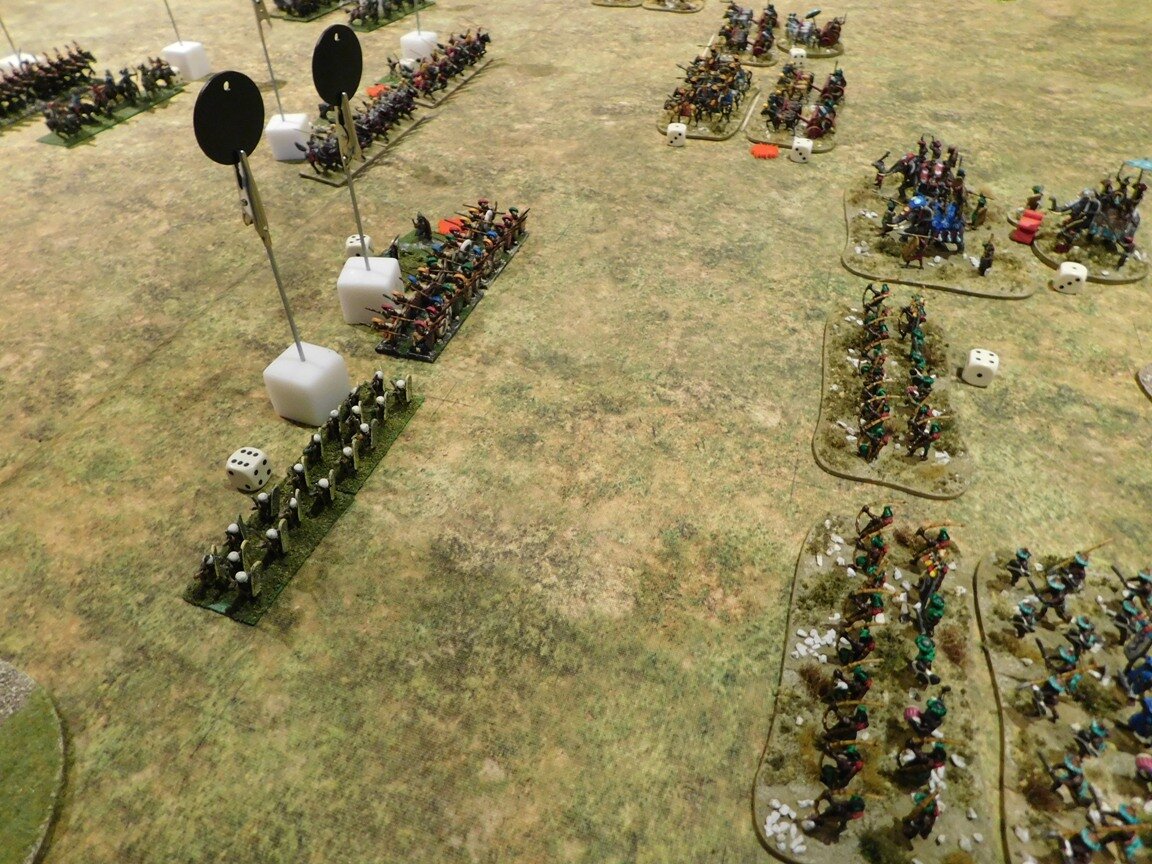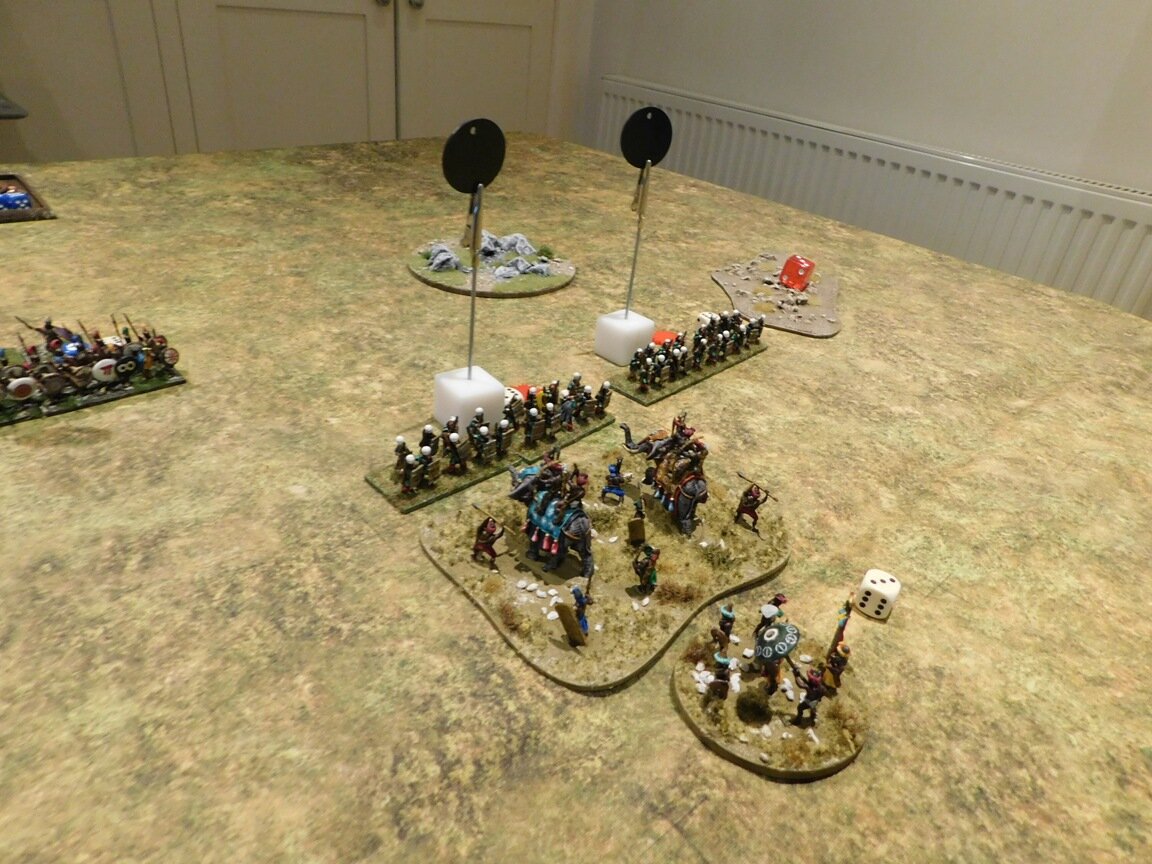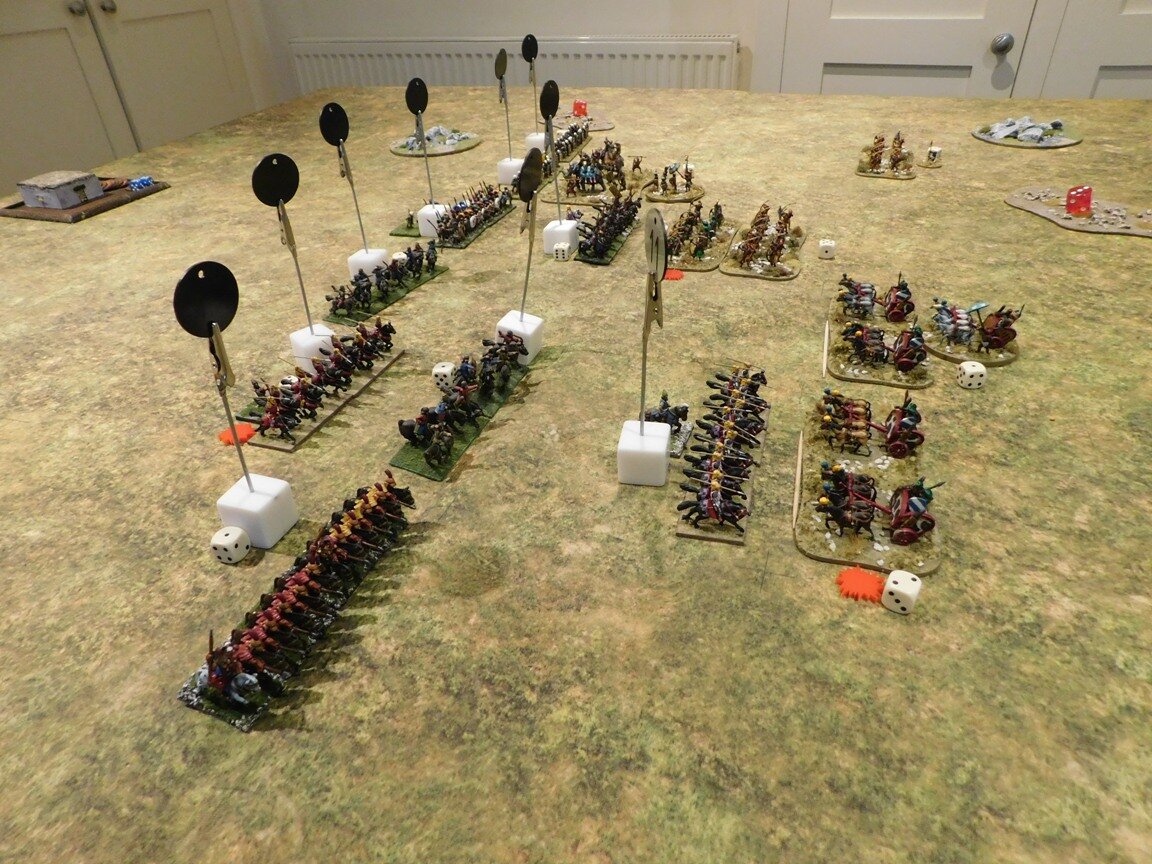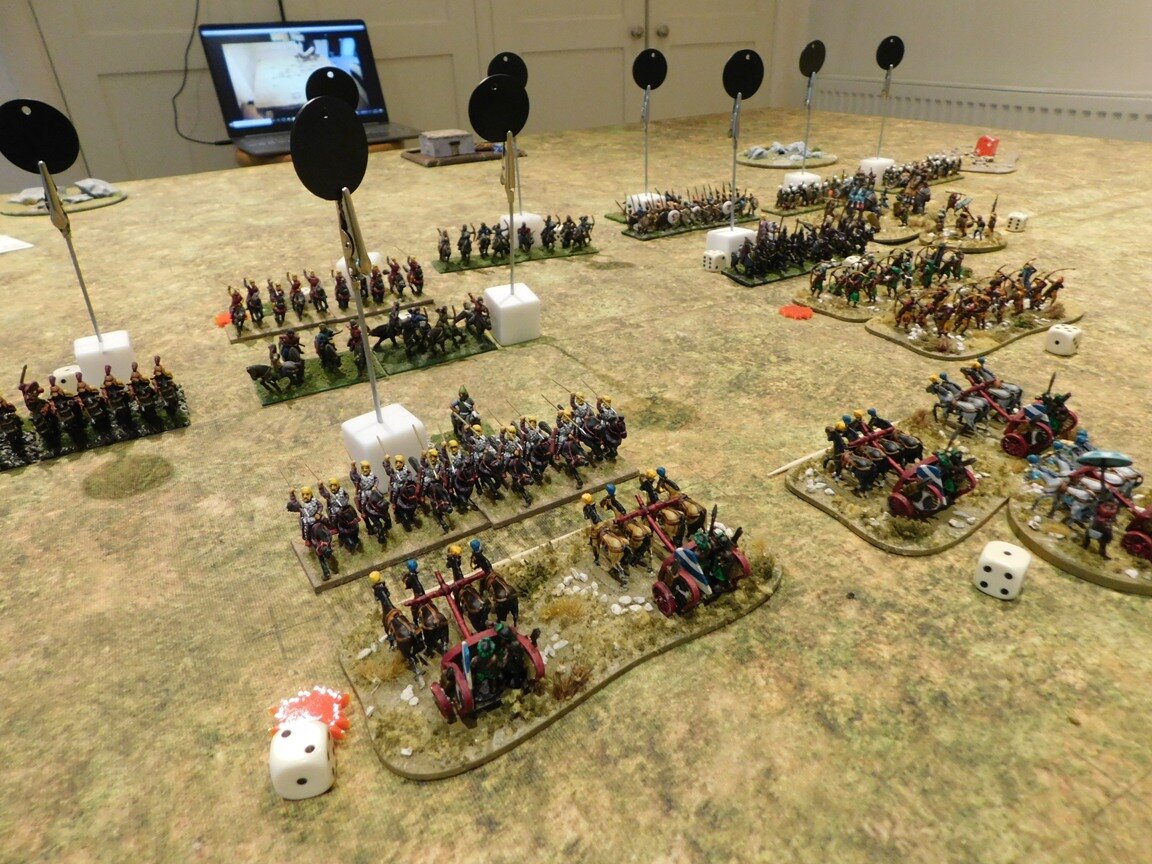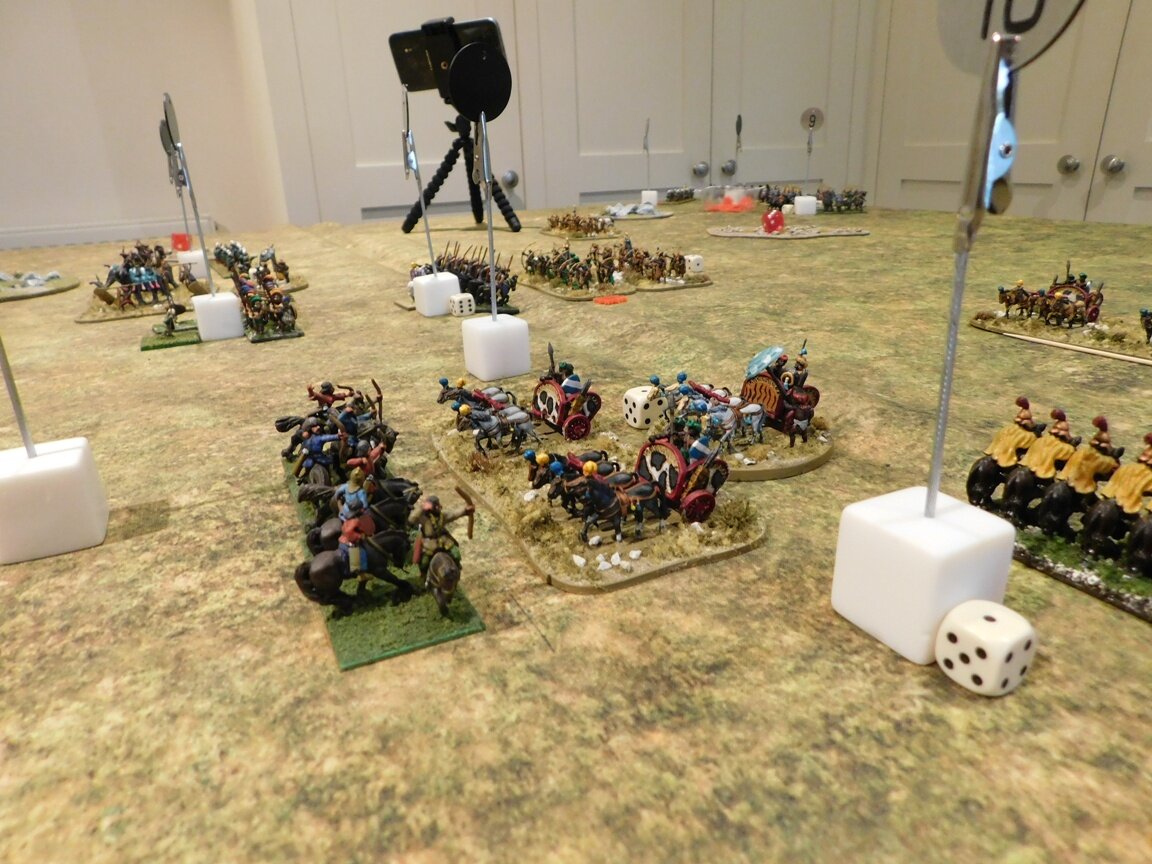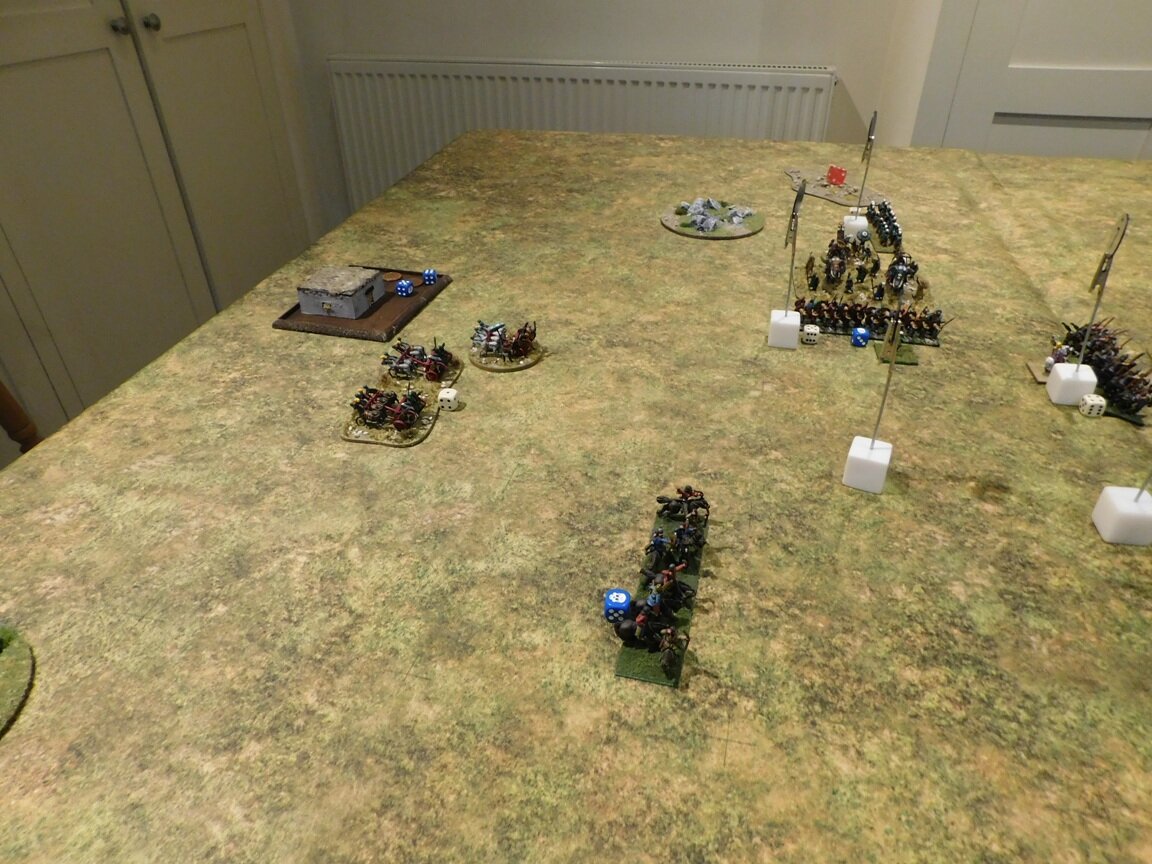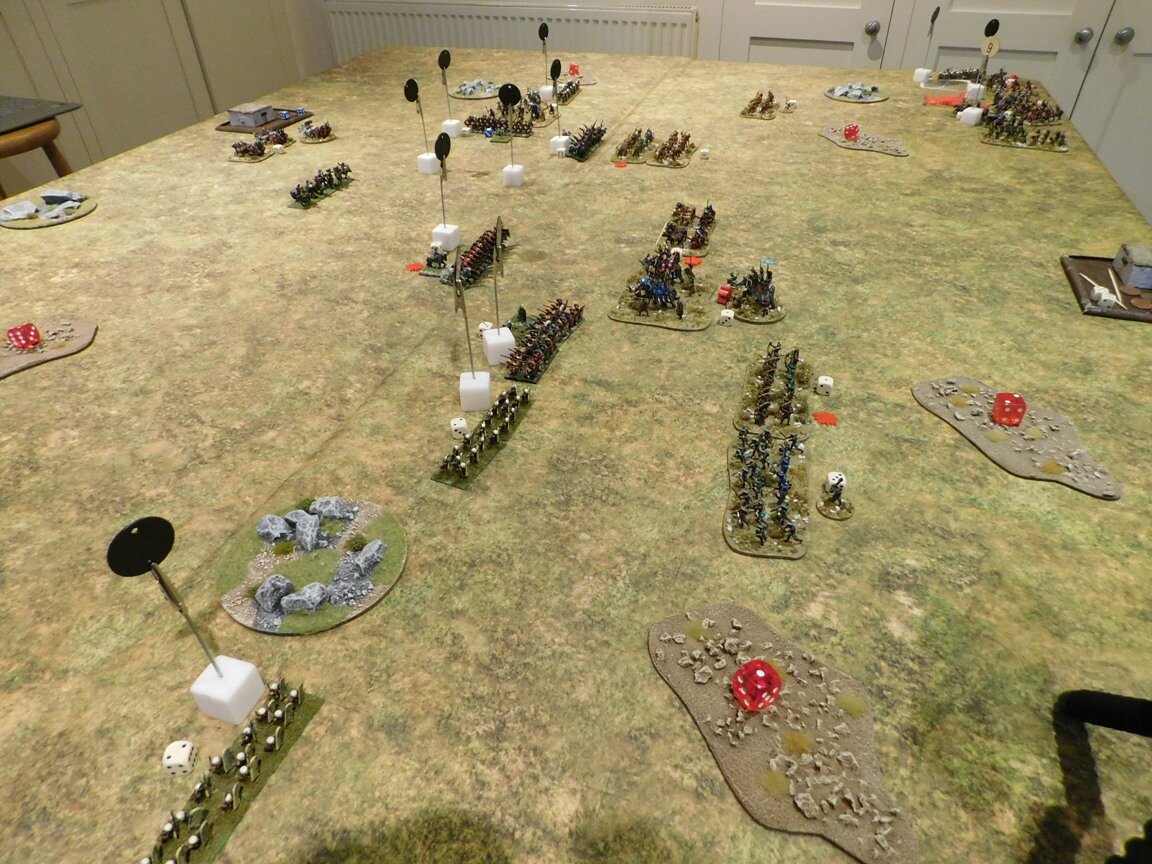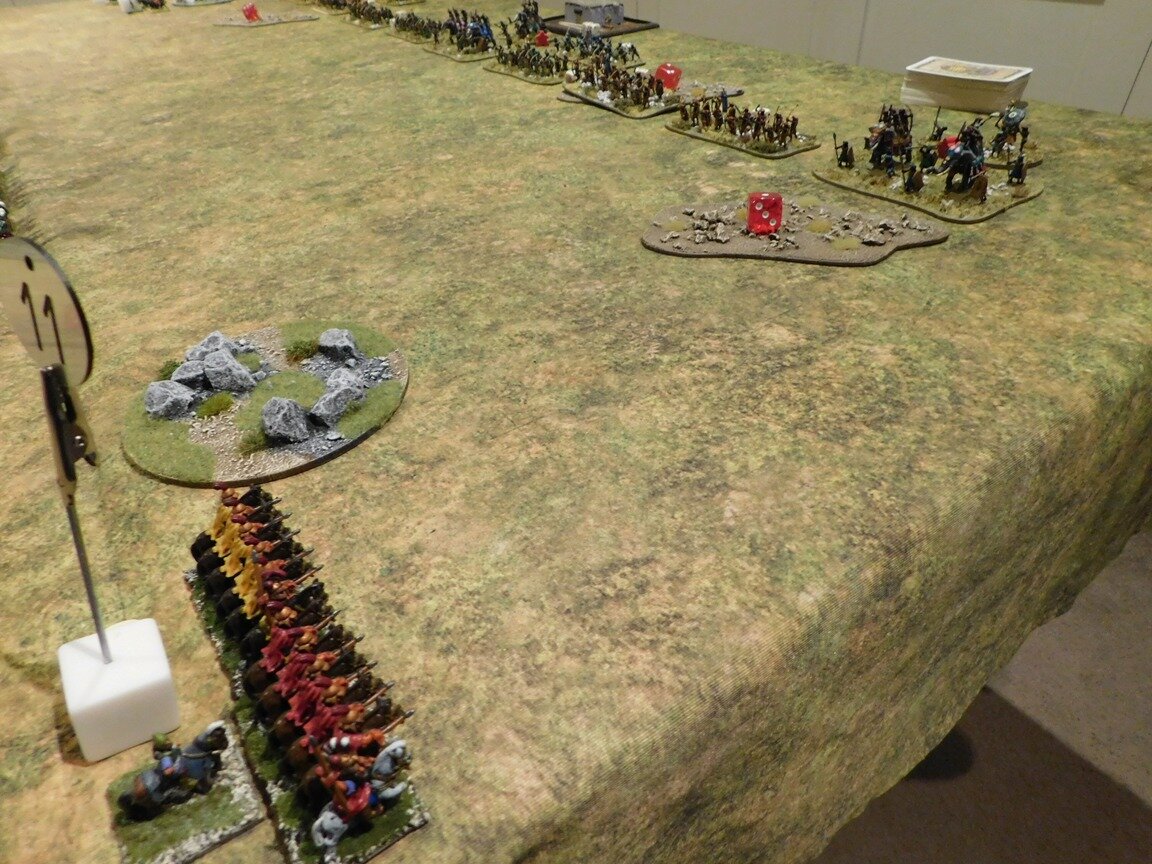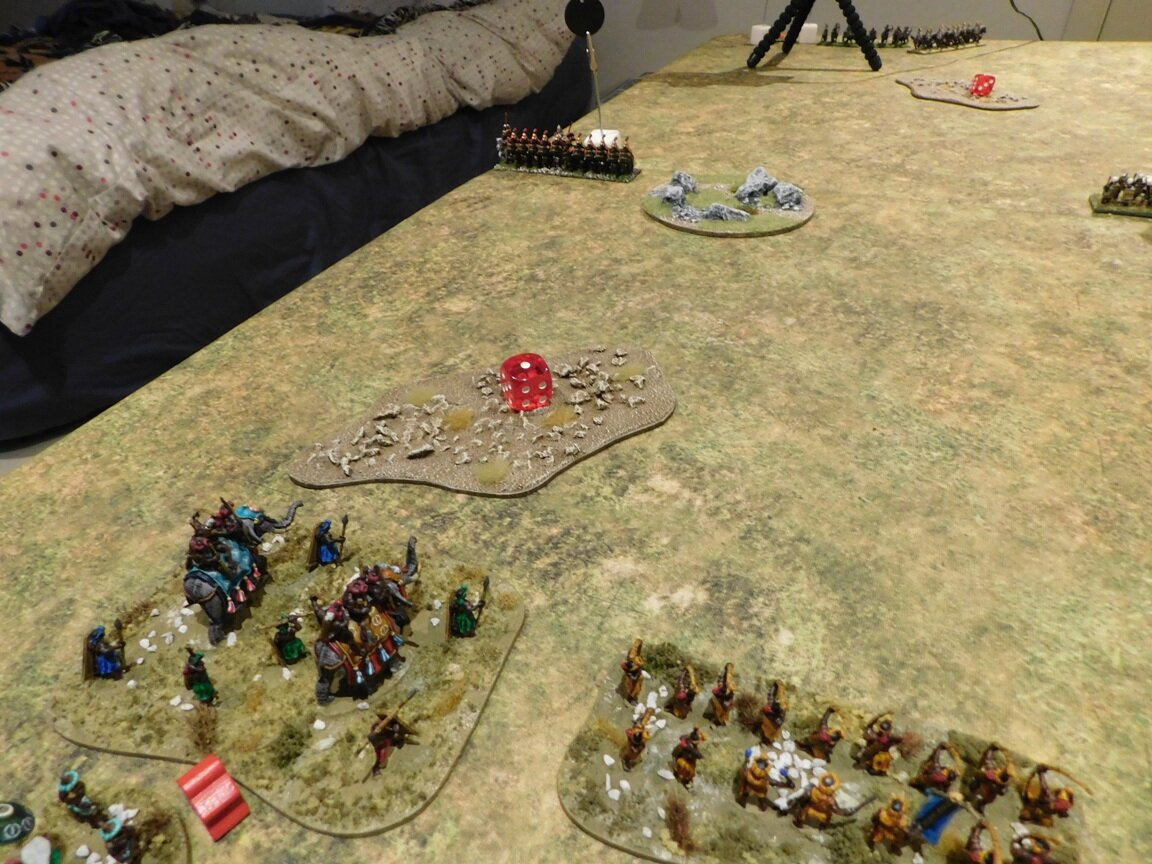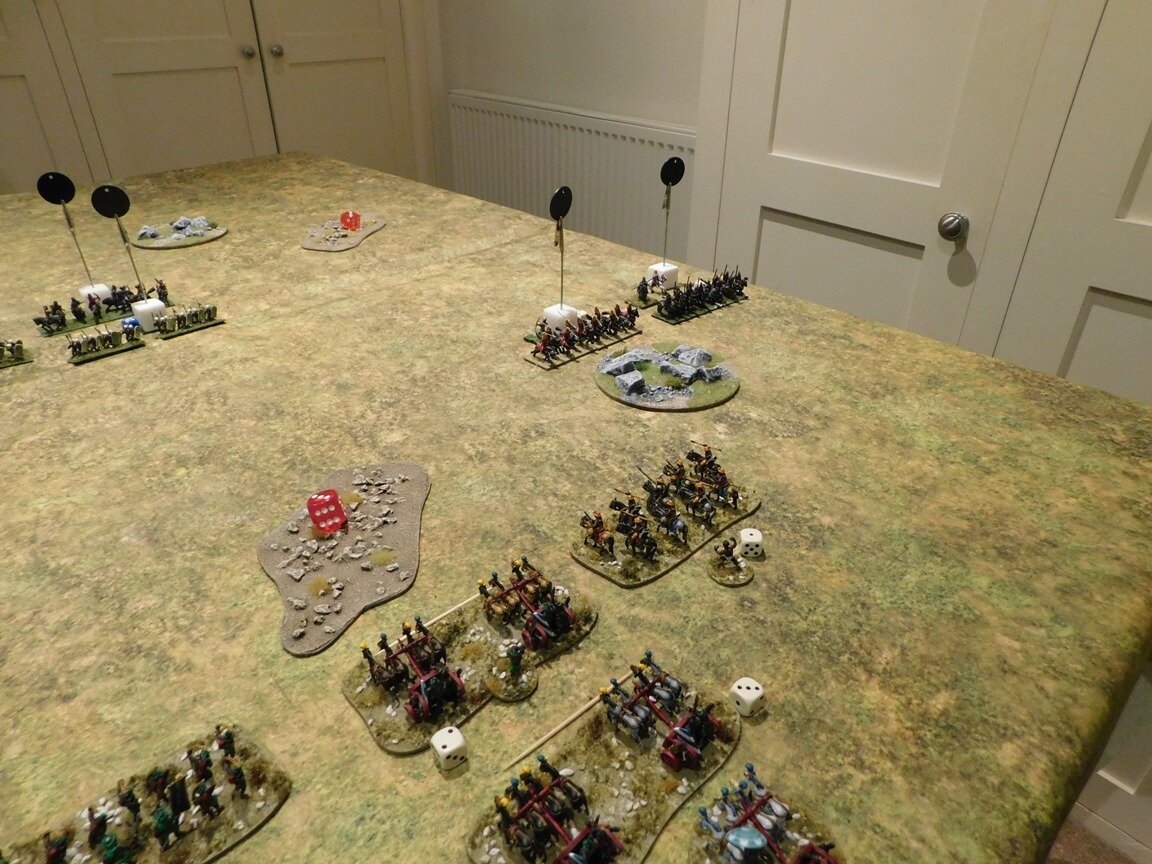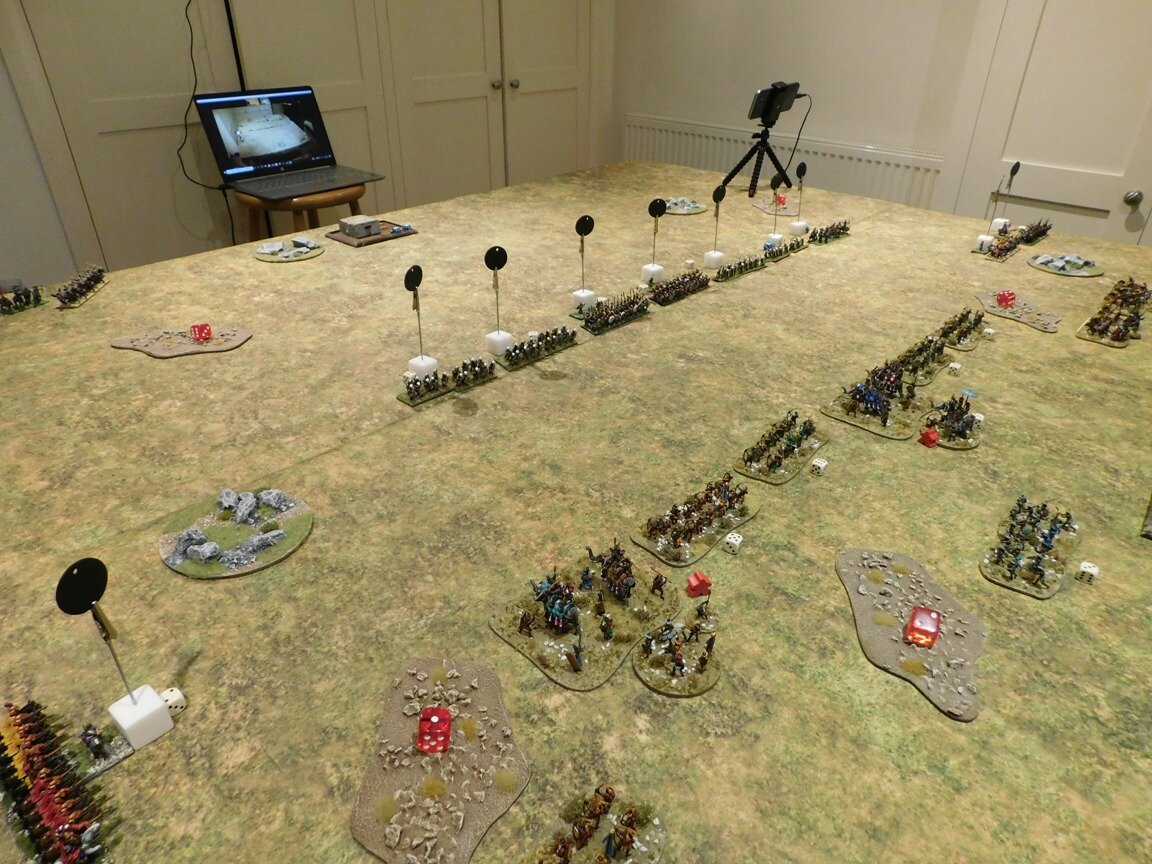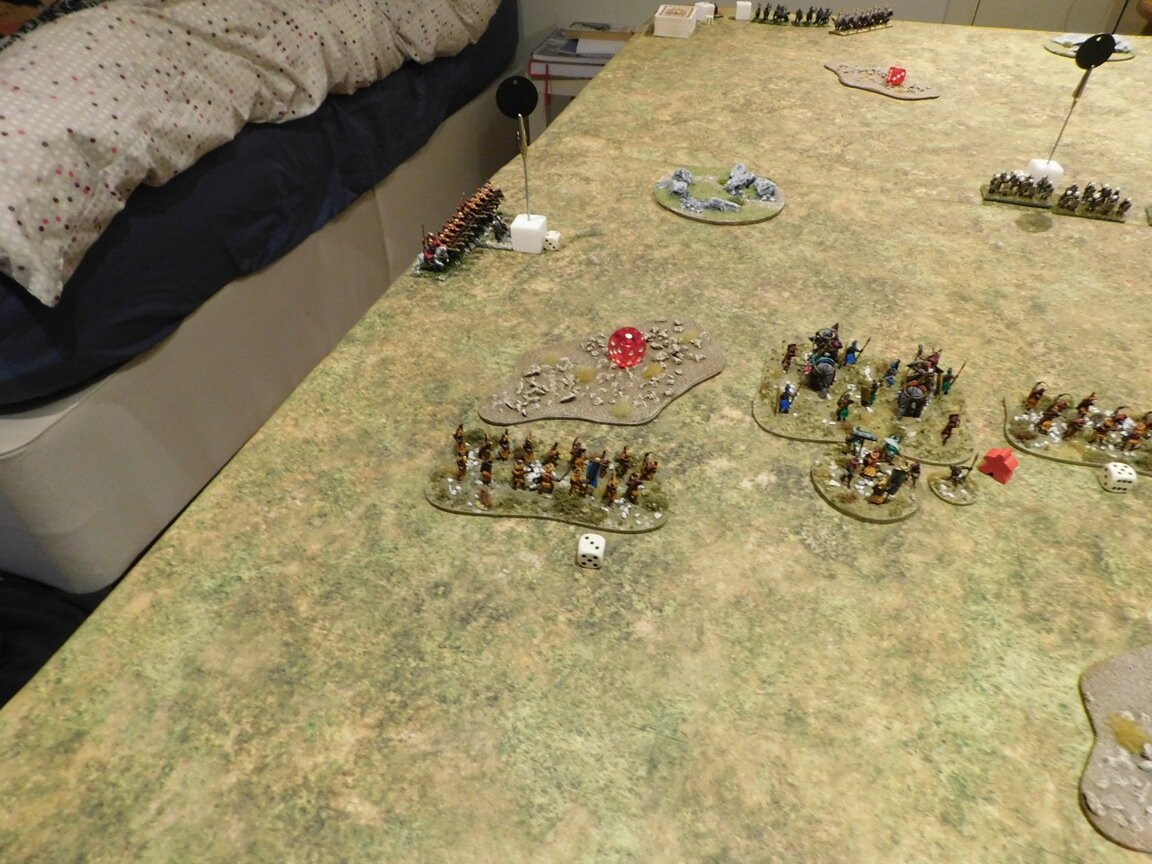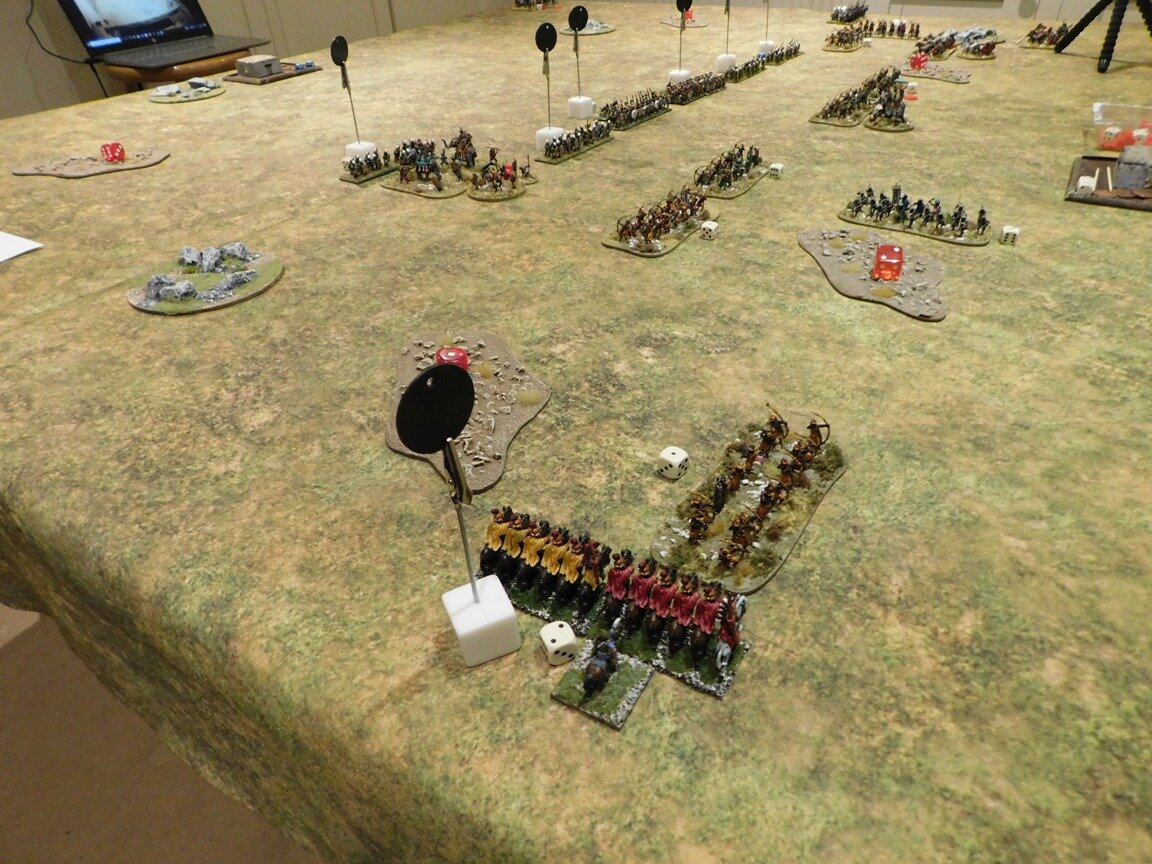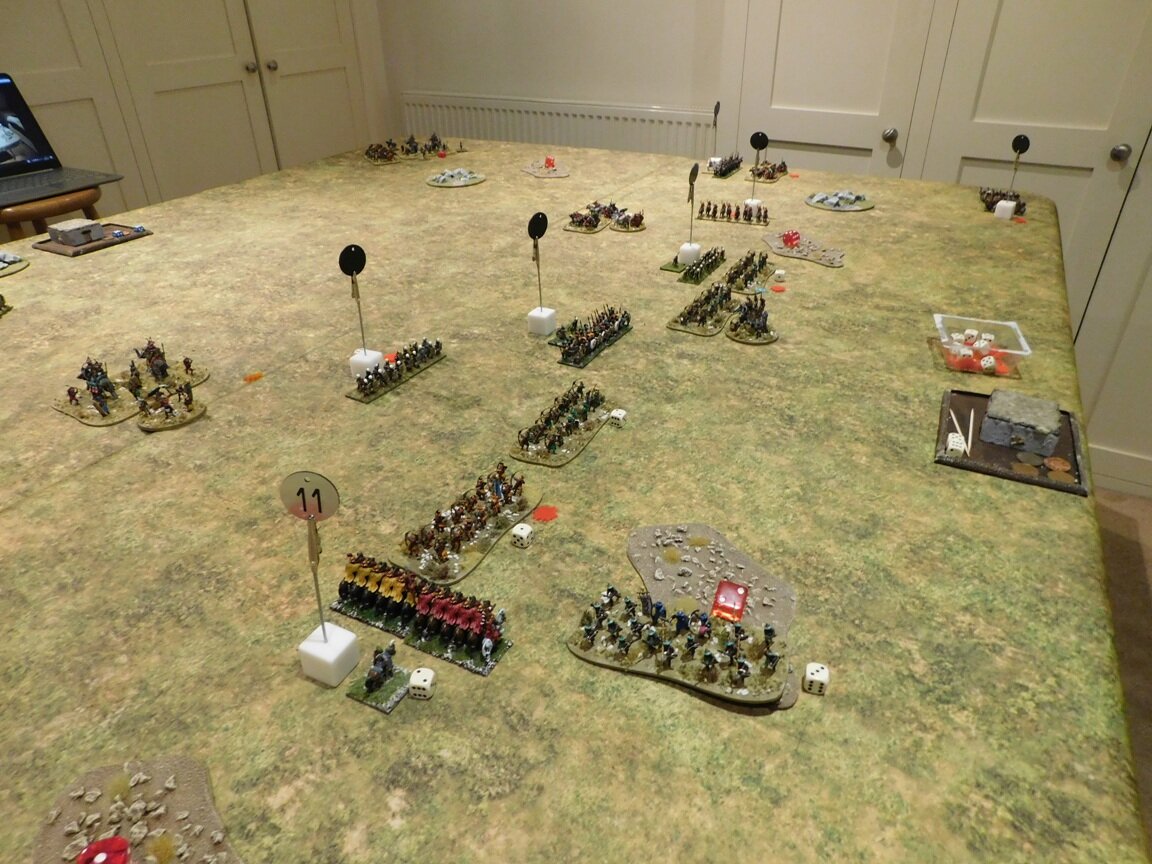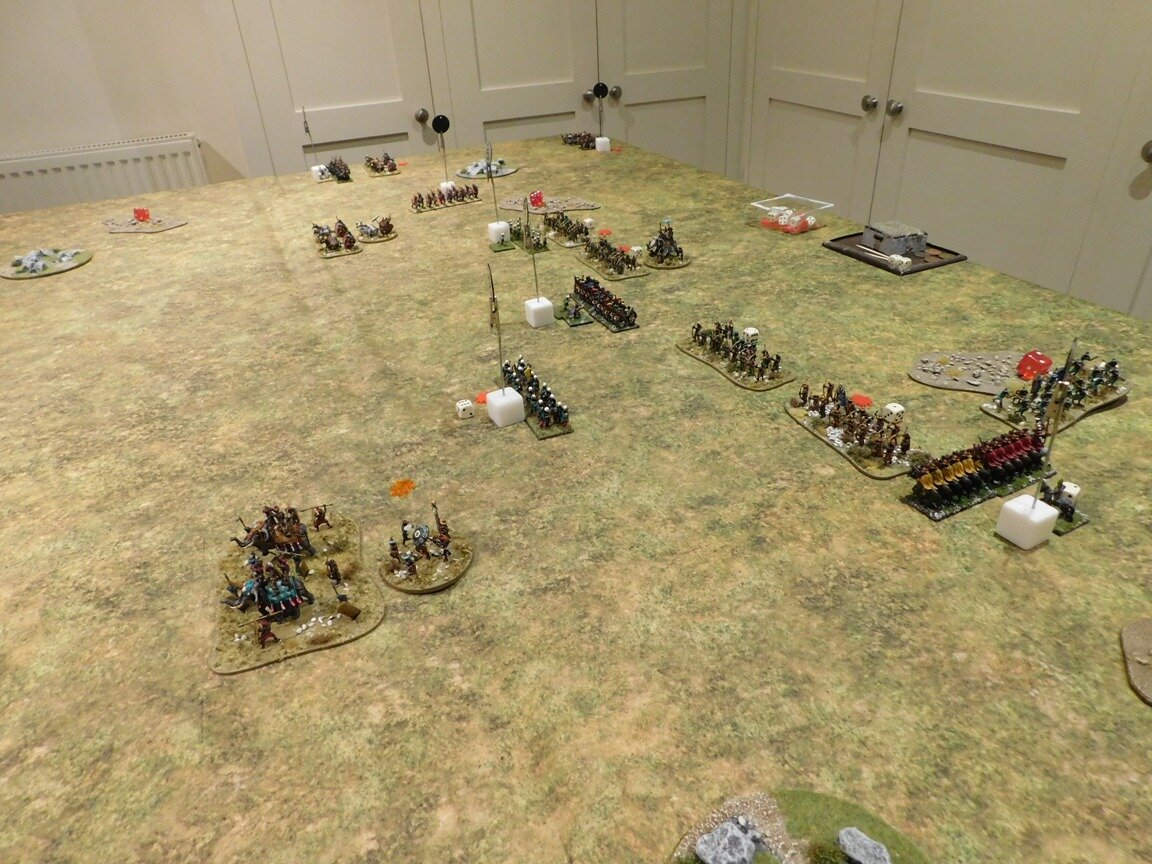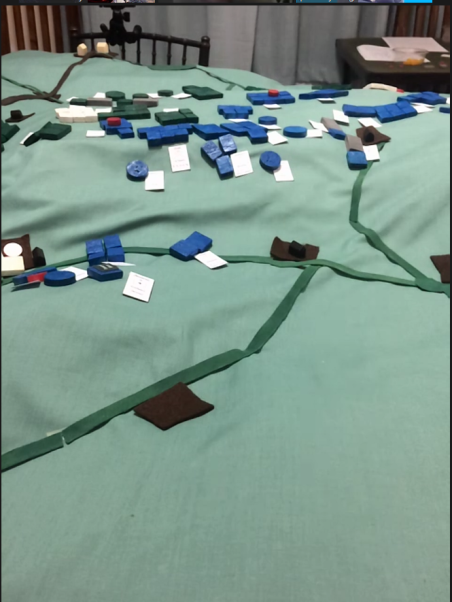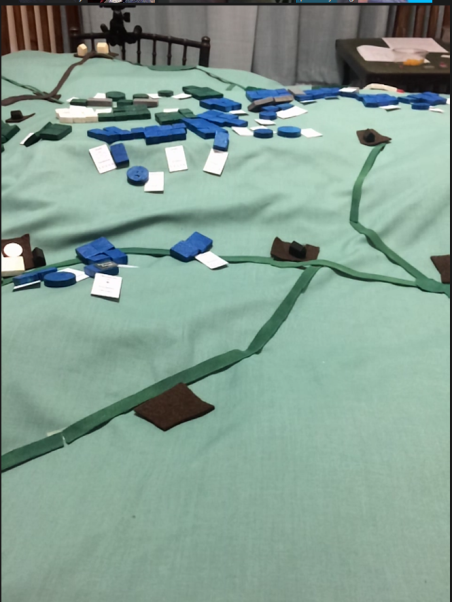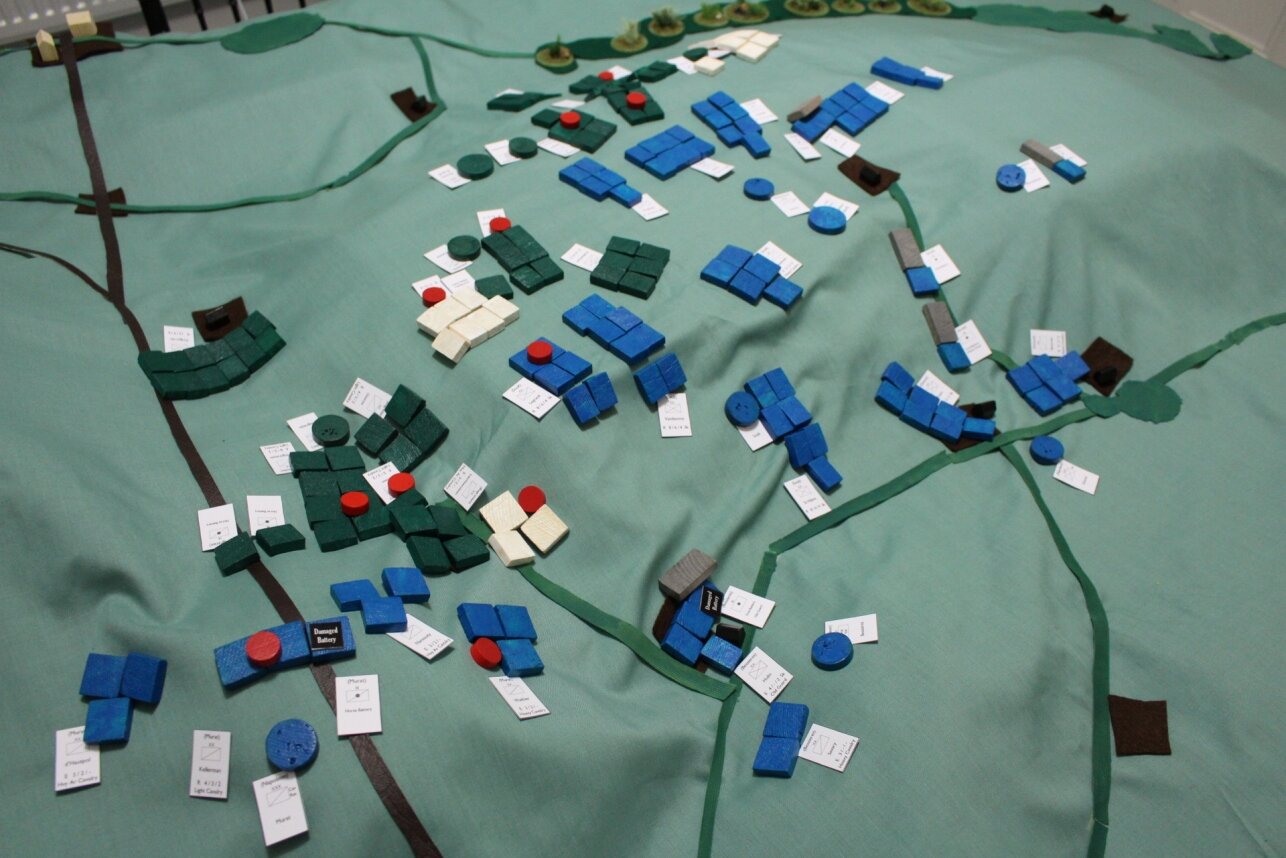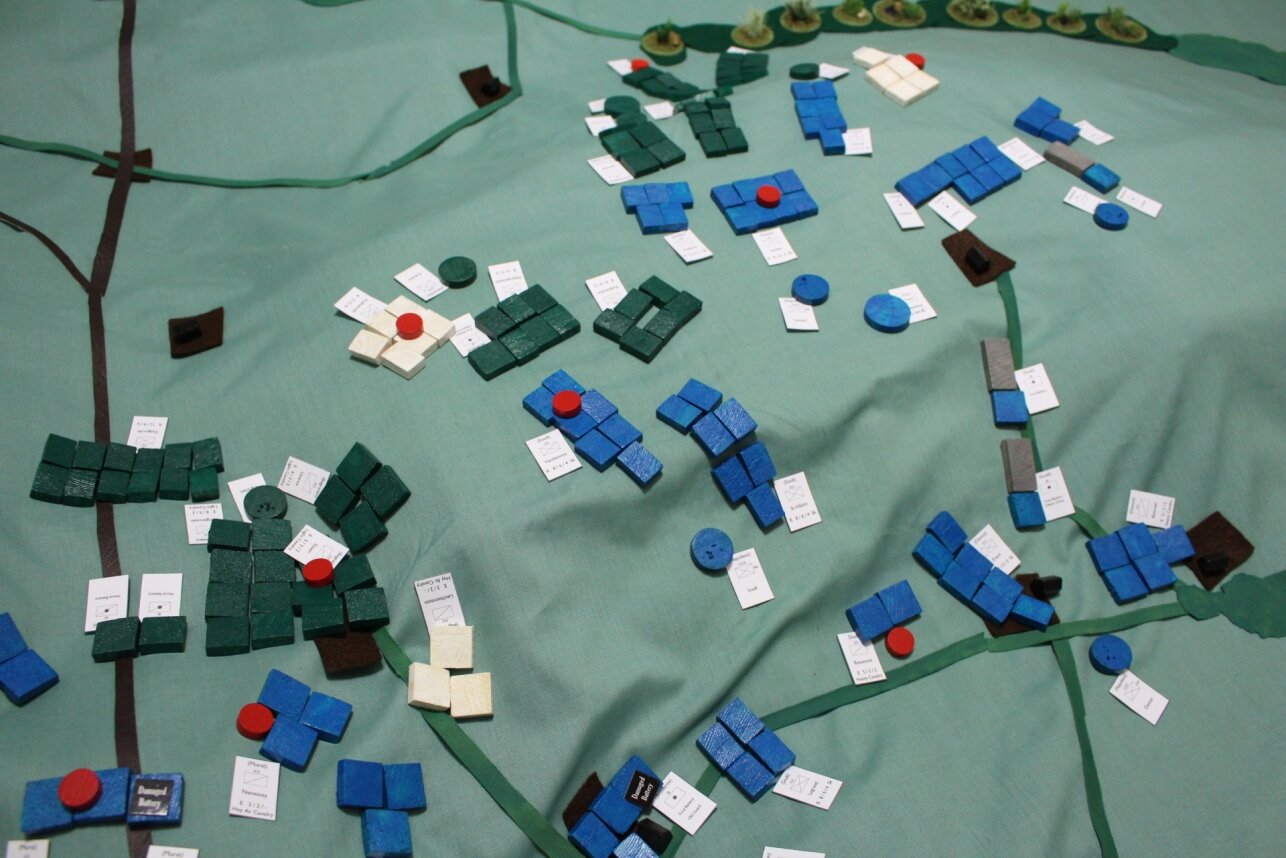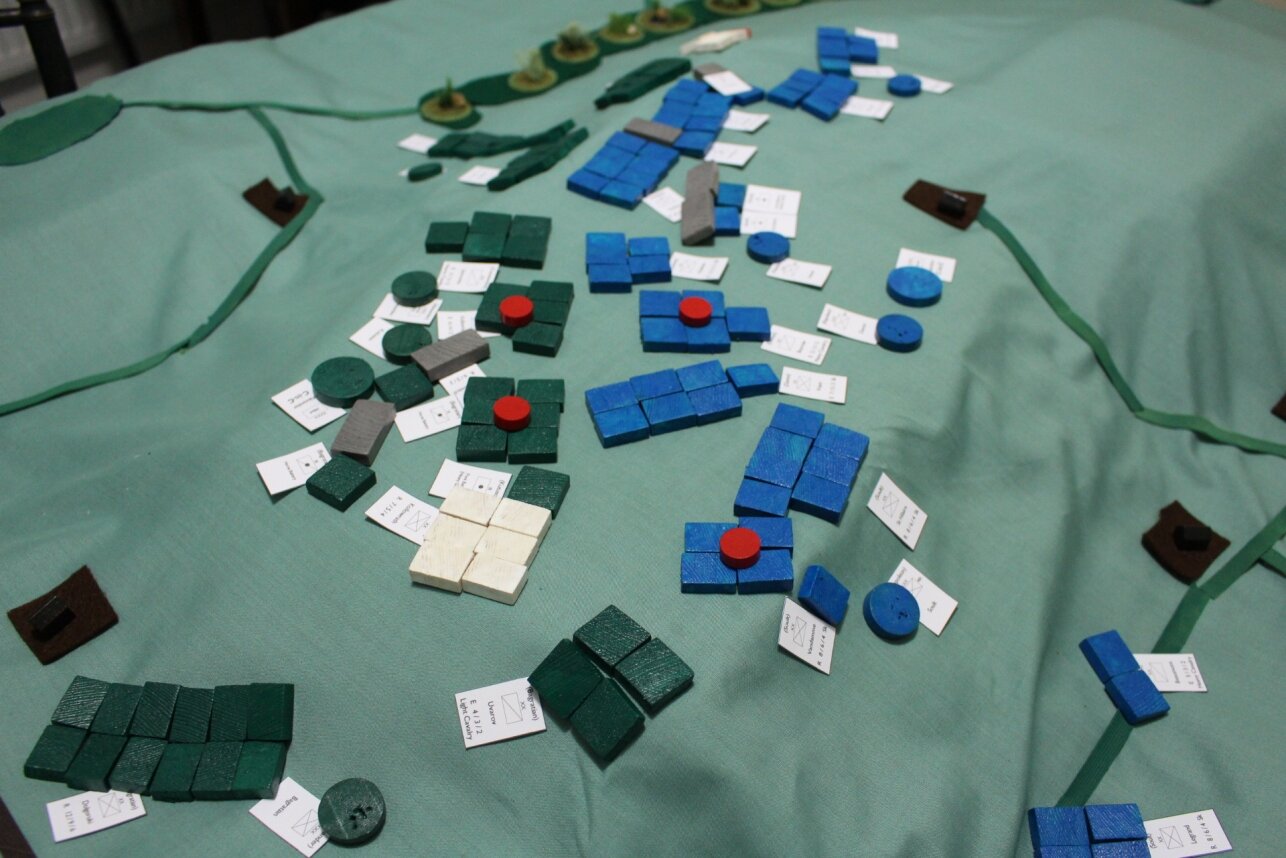AAR: Virtual Lard V
/One of the few good things to come out of lockdown has been how people have found ways of gaming remotely.
The Virtual Lard Games Days are an excellent example of this. Using the Lardy Discord server to co-ordinate, vast numbers of games run simultaneously all around the world, with a virtual pub also available for those all-important post-game discussions. The Virtual Lards are, in effect, online conventions.
Virtual Lard V took place last weekend, and I was lucky enough to get a place on two games: one in the morning and one in the afternoon (this isn’t guaranteed: the sessions are often over-subscribed).
Sharpe Practice in the AM
The morning’s session was a terrific game of Sharp Practice Napoleonics with Col Murray running a session that involved the French (commanded by the two Bobs: Lucky Bob C and myself) attempting to stop some Austrians (commanded by Andrew and Grizzlymc) making away with some items that had best remain nameless.
I won’t detail the step-by-step action, but suffice to say that my masterful mismanagement of the French Grenadiers kept a large proportion of the Austrians so busy shooting them to bits that the rest of our force (Bob’s Line and my Skirmishers) were able to drive the rest of the enemy off the table, so reducing their Force Morale to zero and giving us the game.
It was very exciting. At one stage it looked like being a certain Austrian victory as their Dragoons headed off-table with “the items”…but their movement rolls were poor, giving Bob and I (well, mainly Bob) time to hammer the Hungarians with musket fire again and again until they broke and fled. The last turn could have gone either way, but the draw of the cards, for once, favoured the French, and victory was ours.
Here are some pictures:
As an afterthought, one of the amusing things about Virtual Lard is the way that it brings people from different time zones together. Grizzlymc was actually in Sydney, Australia, and sipping whisky at what, for us, was early morning!
IABSM in PM
My afternoon game was I Ain’t Been Shot, Mum!, with Jim Catchpole running a scenario set in France in 1944. Dan Albrecht and I were commanding a company of British infantry moving forward to clear a village that may or may not have been in German hands. A pleasant chap called Michael was playing the Germans: he hadn’t played IABSM before.
All went well for the British until we hit a major chokepoint: a bridge that proved to be the single crossing point over a fast-flowing river right outside the village in question.
We began by doing everything right: probing over the bridge with out recon carriers, laying down smoke to cover a German MMG, but then the cards turned against us and the German artillery came hammering down.
An abortive attempt to break out of our “beachhead” by the carriers failed dismally (my fault entirely, Dan!) and then we just couldn’t get out of the artillery kill zone. If we moved forward, the waiting Germans shot us; if we stayed where we were we got hit by shells from above.
We lasted a couple of turns then ordered a retreat!
It was a difficult scenario, but we could have done a whole lot better. Which was a pity, as our leapfrogging advance to the bridge was a speedy thing of beauty! What we should then have done was to take the time to spot properly, lay down smoke properly etc but the arrival of the German artillery mucked up our plans.
Well played Michael, well umpired Jim, and I think Dan and I both agreed that our solution was to pull back and call in the artillery. Or, to put it another way: I say we take off and nuke the entire site from orbit...it's the only way to be sure!
Here a few shots of the game right up to the point where the German artillery arrived:
Afterword
All in all, another great Virtual Lard. My thanks to the organisers and game-runners, and can’t wait until the next one.






















